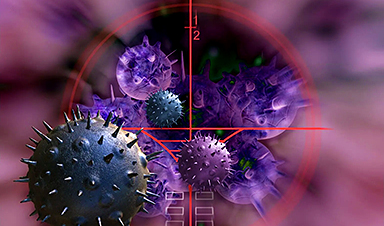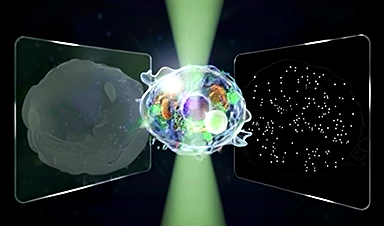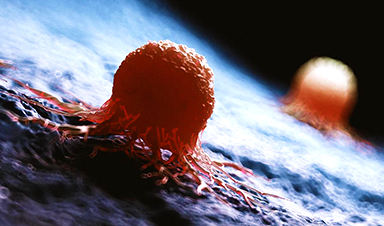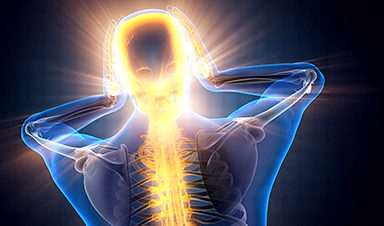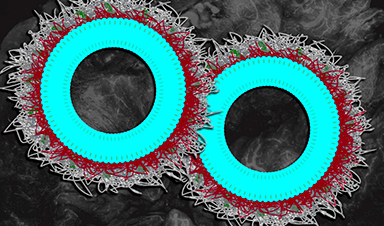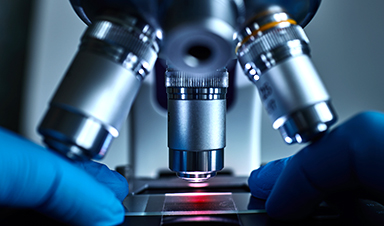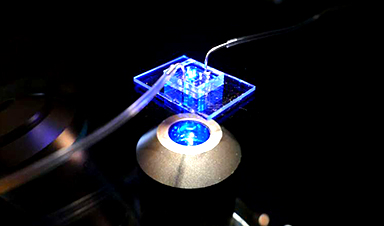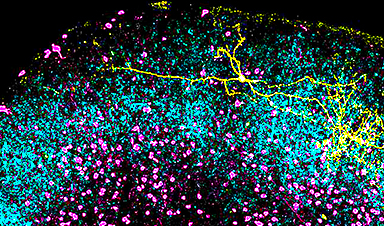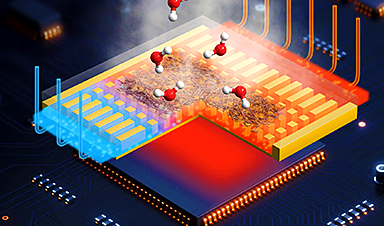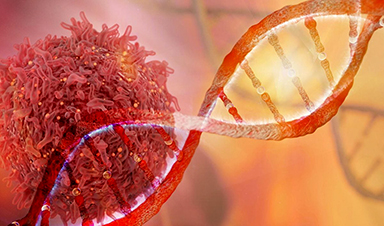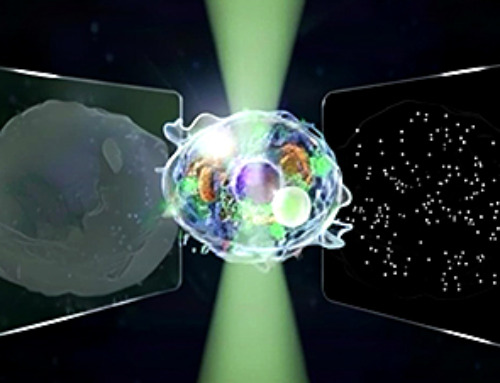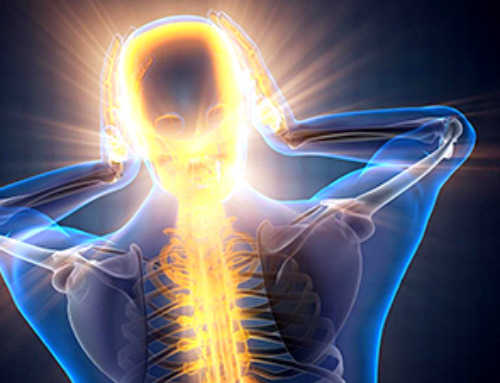A key property needed for the effectiveness of CELMoD drugs, a type of protein degrader, has been discovered.
Scripps Research Institute scientists have discovered a crucial feature that is necessary for CELMoDs, a promising new class of cancer drugs, to work effectively.
CELMoDs are a new class of cancer drugs that function by binding to cereblon, a regulatory protein, which causes the degradation of proteins that drive cancer. Researchers found that for CELMoDs to work effectively, they must cause a specific shape change in cereblon upon binding. This discovery, recently published in the journal Science, allows for the reliable design of effective CELMoDs.
“There are a lot of research groups that have spent considerable time making drugs that bind very tightly to cereblon, but have then scratched their heads in puzzlement that these drugs fail to work,” says study senior author Gabriel Lander, Ph.D., professor in the Department of Integrative Structural and Computational Biology at Scripps Research.
Cereblon works as part of a major protein-disposal system in cells. This system tags targeted proteins with molecules called ubiquitin, which mark the proteins for destruction by roving protein-breaking complexes known as proteasomes. The ubiquitin-proteasome system is used not only to destroy abnormal or damaged proteins, but also to help regulate the levels of some normal proteins. Cereblon is one of the hundreds of “adaptors” used by the ubiquitin-proteasome system to guide the ubiquitin-tagging process toward specific sets of target proteins.
Scientists now recognize that some cancer drugs, including the best-selling myeloma drug lenalidomide (Revlimid), happen to work by binding to cereblon. They do so in a way that forces the ubiquitin-tagging, and consequent destruction, of key proteins that promote cell division—proteins that couldn’t be targeted easily with traditional drugs. Inspired in part by that recognition, drug companies have begun developing cereblon-binding drugs—CELMoDs, also called protein-degradation drugs—that will work even better against myeloma and other cancers.
One enduring problem for the field has been the fact that some of these drugs bind tightly to cereblon, yet fail to cause sufficient degradation of their protein targets. Understanding why this happens has been difficult. Scientists have wanted to use high-resolution imaging methods to map cereblon’s atomic structure and study its dynamics when bound by CELMoDs. But cereblon is a relatively fragile protein that has been hard to capture with such imaging methods.
In the study, Watson spent more than a year devising a recipe for stabilizing cereblon in association with a ubiquitin-system partner protein, in order to image it with low-temperature electron microscopy (cryo-EM). In this way, he was able ultimately to resolve the cereblon structure at a near-atomic scale. Watson also imaged the cereblon-partner complex with CELMoD compounds and target proteins.
The structural data revealed that CELMoDs must bind to cereblon in a way that changes its shape, or conformation. Cereblon, the researchers determined, has a default “open” conformation, but must be switched to a particular “closed” conformation for the ubiquitin-tagging of target proteins.
The main significance of the finding is that drug companies developing CELMoDs now have a much better idea of what their candidate drugs must do to be effective.
“Companies have been developing cereblon-binding protein-degradation drugs that they can see are better degraders, but they didn’t know this was because the drugs are better at driving this closed conformation,” Watson says. “So now they know, and they can test their drugs for this key property.”
Watson’s breakthrough recipe for stabilizing cereblon in preparation for cryo-EM imaging also is now being adopted widely by researchers in this field.
Lander says his lab hopes now to facilitate the development of protein-degradation drugs that work by binding to other ubiquitin-proteasome adaptor proteins besides cereblon. As he notes, the big attraction of the protein-degradation drug strategy is that it can be used to hit virtually any disease-relevant protein, including the very large class of proteins that can’t be targeted with traditional drugs.
News
“Great Unified Microscope” Reveals Hidden Micro and Nano Worlds Inside Living Cells
University of Tokyo researchers have created a powerful new microscope that captures both forward- and back-scattered light at once, letting scientists see everything from large cell structures to tiny nanoscale particles in a single shot. Researchers [...]
Breakthrough Alzheimer’s Drug Has a Hidden Problem
Researchers in Japan found that although the Alzheimer’s drug lecanemab successfully removes amyloid plaques from the brain, it does not restore the brain’s waste-clearing system within the first few months of treatment. The study suggests that [...]
Concerning New Research Reveals Colon Cancer Is Skyrocketing in Adults Under 50
Colorectal cancer is striking younger adults at alarming rates, driven by lifestyle and genetic factors. Colorectal cancer (CRC) develops when abnormal cells grow uncontrollably in the colon or rectum, forming tumors that can eventually [...]
Scientists Discover a Natural, Non-Addictive Way To Block Pain That Could Replace Opioids
Scientists have discovered that the body can naturally dull pain through its own localized “benzodiazepine-like” peptides. A groundbreaking study led by a University of Leeds scientist has unveiled new insights into how the body manages pain, [...]
GLP-1 Drugs Like Ozempic Work, but New Research Reveals a Major Catch
Three new Cochrane reviews find evidence that GLP-1 drugs lead to clinically meaningful weight loss, though industry-funded studies raise concerns. Three new reviews from Cochrane have found that GLP-1 medications can lead to significant [...]
How a Palm-Sized Laser Could Change Medicine and Manufacturing
Researchers have developed an innovative and versatile system designed for a new generation of short-pulse lasers. Lasers that produce extremely short bursts of light are known for their remarkable precision, making them indispensable tools [...]
New nanoparticles stimulate the immune system to attack ovarian tumors
Cancer immunotherapy, which uses drugs that stimulate the body’s immune cells to attack tumors, is a promising approach to treating many types of cancer. However, it doesn’t work well for some tumors, including ovarian [...]
New Drug Kills Cancer 20,000x More Effectively With No Detectable Side Effects
By restructuring a common chemotherapy drug, scientists increased its potency by 20,000 times. In a significant step forward for cancer therapy, researchers at Northwestern University have redesigned the molecular structure of a well-known chemotherapy drug, greatly [...]
Lipid nanoparticles discovered that can deliver mRNA directly into heart muscle cells
Cardiovascular disease continues to be the leading cause of death worldwide. But advances in heart-failure therapeutics have stalled, largely due to the difficulty of delivering treatments at the cellular level. Now, a UC Berkeley-led [...]
The basic mechanisms of visual attention emerged over 500 million years ago, study suggests
The brain does not need its sophisticated cortex to interpret the visual world. A new study published in PLOS Biology demonstrates that a much older structure, the superior colliculus, contains the necessary circuitry to perform the [...]
AI Is Overheating. This New Technology Could Be the Fix
Engineers have developed a passive evaporative cooling membrane that dramatically improves heat removal for electronics and data centers Engineers at the University of California San Diego have created an innovative cooling system designed to greatly enhance [...]
New nanomedicine wipes out leukemia in animal study
In a promising advance for cancer treatment, Northwestern University scientists have re-engineered the molecular structure of a common chemotherapy drug, making it dramatically more soluble and effective and less toxic. In the new study, [...]
Mystery Solved: Scientists Find Cause for Unexplained, Deadly Diseases
A study reveals that a protein called RPA is essential for maintaining chromosome stability by stimulating telomerase. New findings from the University of Wisconsin-Madison suggest that problems with a key protein that helps preserve chromosome stability [...]
Nanotech Blocks Infection and Speed Up Chronic Wound Recovery
A new nanotech-based formulation using quercetin and omega-3 fatty acids shows promise in halting bacterial biofilms and boosting skin cell repair. Scientists have developed a nanotechnology-based treatment to fight bacterial biofilms in wound infections. The [...]
Researchers propose five key questions for effective adoption of AI in clinical practice
While Artificial Intelligence (AI) can be a powerful tool that physicians can use to help diagnose their patients and has great potential to improve accuracy, efficiency and patient safety, it has its drawbacks. It [...]
Advancements and clinical translation of intelligent nanodrugs for breast cancer treatment
A comprehensive review in "Biofunct. Mater." meticulously details the most recent advancements and clinical translation of intelligent nanodrugs for breast cancer treatment. This paper presents an exhaustive overview of subtype-specific nanostrategies, the clinical benefits [...]
